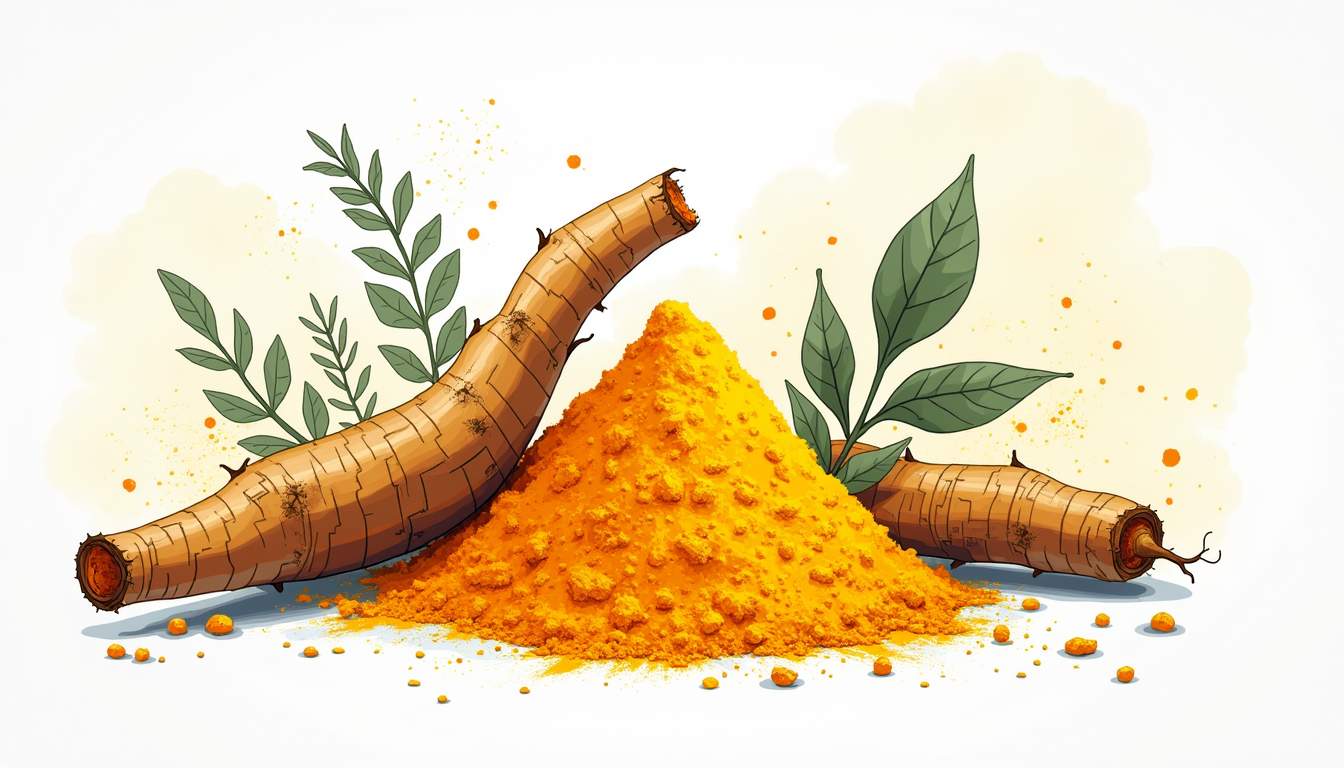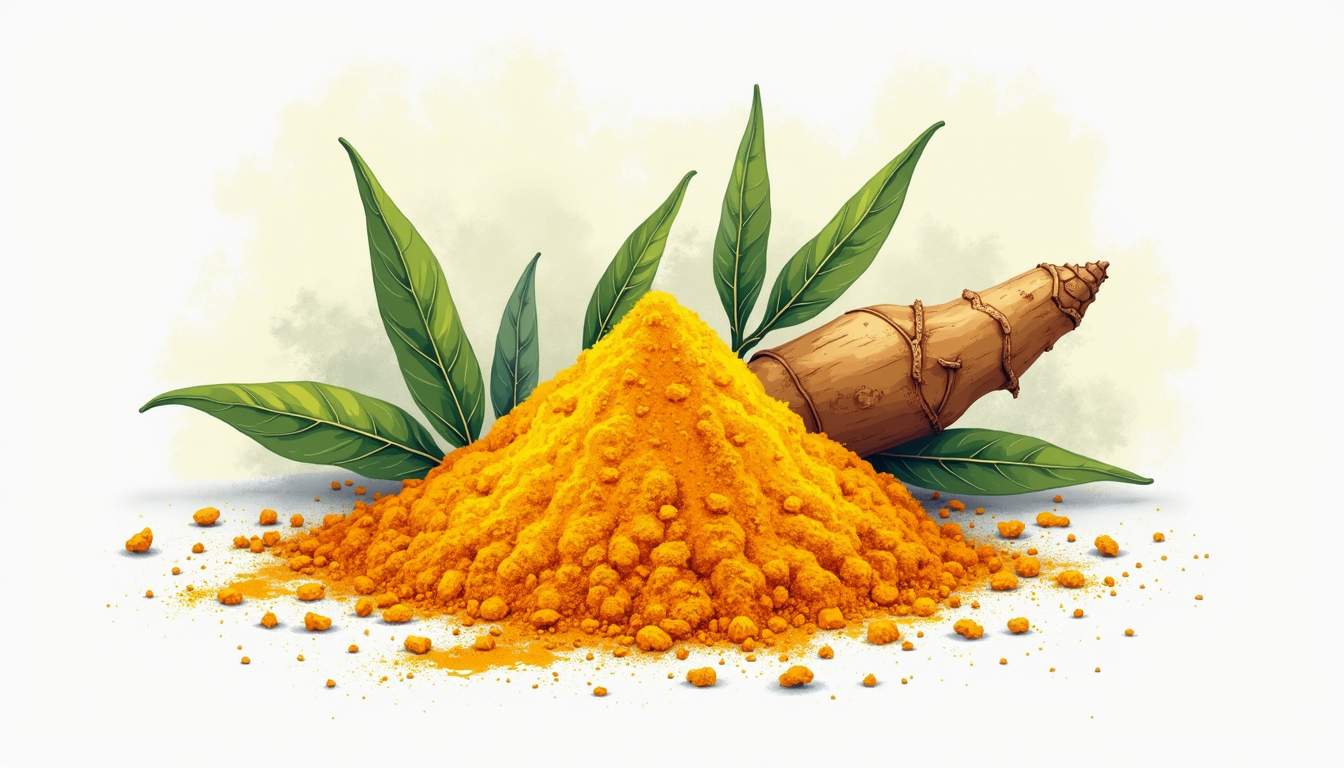Turmeric, rich in the active compound curcumin, offers natural anti-inflammatory and antioxidant properties that may help reduce arthritis symptoms like joint pain and stiffness. Studies suggest turmeric can be as effective as some conventional medications, making it a popular supplement for arthritis relief.
Understanding Turmeric's Medicinal Properties
Turmeric has been celebrated for centuries, not only as a culinary ingredient but also for its remarkable medicinal properties. The spice is rich in bioactive compounds, most notably curcumin, which is responsible for many of its health benefits. Curcumin possesses anti-inflammatory, antioxidant, and analgesic properties, making it a compelling candidate for managing conditions like arthritis.

The Active Compound: Curcumin Explained
Curcumin, the primary active compound in turmeric, has been extensively studied for its therapeutic effects. It works by inhibiting various molecules that play a role in inflammation, such as cytokines and enzymes. This action can help reduce swelling and pain associated with arthritis, offering a natural alternative to conventional anti-inflammatory medications.
Moreover, curcumin's antioxidant properties help combat oxidative stress, which is often heightened in individuals with arthritis. By neutralizing free radicals, curcumin can protect joint tissues from damage, potentially slowing the progression of arthritis and improving overall joint health.
Historical Use of Turmeric in Traditional Medicine
The use of turmeric in traditional medicine dates back thousands of years, particularly in Ayurvedic and Chinese medicine. Historically, it has been employed to treat a variety of ailments, including joint pain and inflammation. Ancient practitioners recognized the spice's potential in alleviating discomfort and promoting overall health.
In many cultures, turmeric has been used not only for its flavor but also as a natural remedy for conditions ranging from digestive issues to skin disorders. Its long-standing history in traditional medicine underscores its significance and effectiveness as a holistic approach to health and wellness.
In Ayurveda, turmeric is often referred to as "the golden spice," and is believed to balance the three doshas: Vata, Pitta, and Kapha. This balance is thought to be essential for maintaining health and preventing disease. Turmeric is frequently combined with other herbs and spices to enhance its effects, such as black pepper, which contains piperine, a compound that significantly increases curcumin's bioavailability. This synergy highlights the importance of traditional practices in maximizing the therapeutic potential of natural ingredients.
Furthermore, the cultural significance of turmeric extends beyond its medicinal uses. In many South Asian weddings, turmeric is used in ceremonial rituals, symbolizing purity and prosperity. This deep-rooted connection to cultural traditions illustrates how turmeric has been woven into the fabric of daily life, serving not only as a health booster but also as a symbol of joy and celebration throughout history.
Scientific Evidence for Arthritis Relief
While traditional uses of turmeric are well-documented, modern scientific research has begun to validate these claims. Numerous studies have explored the effects of curcumin on arthritis, providing insights into its efficacy and potential as a complementary treatment option. The growing body of evidence suggests that curcumin may not only alleviate symptoms but also address underlying inflammation, which is a key factor in the progression of arthritis.

Clinical Studies on Turmeric and Joint Pain
Several clinical trials have investigated the impact of curcumin on arthritis symptoms. One notable study published in a reputable journal found that participants who took curcumin supplements experienced significant reductions in joint pain and stiffness compared to those receiving a placebo. The results indicated that curcumin could be as effective as some conventional anti-inflammatory medications, with fewer side effects. This is particularly important for patients who may be sensitive to the adverse effects of traditional treatments.
Another study focused on patients with osteoarthritis, revealing that curcumin supplementation led to improved physical function and reduced inflammation markers. These findings suggest that curcumin may not only alleviate pain but also enhance mobility and quality of life for individuals suffering from arthritis. Additionally, researchers have noted that curcumin's antioxidant properties may play a role in protecting joint tissues from further damage, making it a promising candidate for long-term management of arthritis.
Comparing Turmeric to Conventional Arthritis Medications
When considering treatment options for arthritis, many individuals weigh the benefits and drawbacks of conventional medications against natural alternatives like turmeric. Conventional arthritis medications, such as nonsteroidal anti-inflammatory drugs (NSAIDs), can provide rapid relief but often come with a range of side effects, including gastrointestinal issues and increased risk of cardiovascular problems. These concerns have led many patients to seek out safer alternatives that can offer relief without the burden of adverse effects.
In contrast, turmeric and its active compound curcumin offer a more holistic approach with a favorable safety profile. While more research is needed to fully understand its long-term effects, many individuals report fewer side effects when using curcumin as part of their arthritis management plan. This makes turmeric an appealing option for those seeking a natural remedy. Furthermore, turmeric's versatility allows it to be easily incorporated into various diets, whether as a spice in cooking, in smoothies, or as a supplement, making it accessible for a wide range of individuals looking to improve their joint health.
Incorporating Turmeric into Your Arthritis Management Plan
For those interested in harnessing the benefits of turmeric for arthritis, it is essential to understand how to incorporate it effectively into a daily routine. Whether through supplements or culinary applications, there are various ways to enjoy this potent spice. Turmeric, known for its vibrant yellow color and earthy flavor, has been used for centuries in traditional medicine, particularly in Ayurvedic and Chinese practices, due to its anti-inflammatory and antioxidant properties. Its active compound, curcumin, is believed to play a crucial role in alleviating joint pain and stiffness associated with arthritis.
Recommended Dosages and Supplement Forms
When considering turmeric supplementation, it's important to consult with a healthcare professional to determine the appropriate dosage. Research suggests that doses of curcumin ranging from 500 to 2000 mg per day may be beneficial for arthritis relief. However, individual needs can vary based on factors such as the severity of symptoms and overall health. Additionally, some studies indicate that taking curcumin with a fatty meal can further enhance its absorption, as curcumin is fat-soluble. This means that pairing your turmeric intake with healthy fats, such as avocado or olive oil, can maximize its benefits.
Curcumin supplements are available in various forms, including capsules, powders, and tinctures. It's advisable to choose high-quality products that contain piperine, a compound found in black pepper that enhances curcumin absorption. This combination can significantly increase the effectiveness of turmeric in the body. Furthermore, some brands offer formulations that include additional anti-inflammatory ingredients, such as ginger or boswellia, which can provide synergistic effects for those managing arthritis symptoms.
Turmeric Recipes and Preparation Methods for Maximum Benefits
In addition to supplements, turmeric can be easily incorporated into the diet through various recipes. One popular method is to create a turmeric tea or "golden milk," combining turmeric with warm milk (dairy or plant-based), a pinch of black pepper, and a sweetener of choice. This soothing beverage not only tastes delicious but also provides a convenient way to enjoy the benefits of turmeric. To enhance the flavor, consider adding a dash of cinnamon or a spoonful of honey, both of which have their own health benefits and can make the drink even more enjoyable.
Turmeric can also be added to soups, stews, and stir-fries, enhancing both flavor and nutritional value. For those who enjoy baking, incorporating turmeric into muffins or bread can be a creative way to include this spice in everyday meals. The key is to experiment with different recipes and find enjoyable ways to consume turmeric regularly. For instance, a turmeric-infused quinoa salad with roasted vegetables can serve as a nutritious side dish or main course, providing a colorful and healthful addition to any meal. Additionally, consider making a turmeric paste by mixing turmeric powder with water, which can be used as a base for various dishes, allowing for versatility in your cooking while reaping the benefits of this remarkable spice.
Explore our high-quality turmeric supplement designed to support joint health:
Turmeric + Curcuma Supplement

Share:
Turmeric and Black Pepper: Side Effects, Safety, and When to Avoid
When Is the Best Time to Take Turmeric? Morning vs Evening Benefits Explained